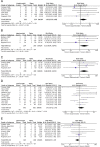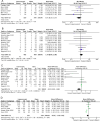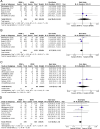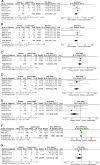Laparoscopic treatment of ventral hernias: the Italian national guidelines
- PMID: 37217637
- PMCID: PMC10202362
- DOI: 10.1007/s13304-023-01534-3
Laparoscopic treatment of ventral hernias: the Italian national guidelines
Abstract
Primary and incisional ventral hernias are significant public health issues for their prevalence, variability of professional practices, and high costs associated with the treatment In 2019, the Board of Directors of the Italian Society for Endoscopic Surgery (SICE) promoted the development of new guidelines on the laparoscopic treatment of ventral hernias, according to the new national regulation. In 2022, the guideline was accepted by the government agency, and it was published, in Italian, on the SNLG website. Here, we report the adopted methodology and the guideline's recommendations, as established in its diffusion policy. This guideline is produced according to the methodology indicated by the SNGL and applying the Grading of Recommendations, Assessment, Development, and Evaluations (GRADE) methodology. Fifteen recommendations were produced as a result of 4 PICO questions. The level of recommendation was conditional for 12 of them and conditional to moderate for one. This guideline's strengths include relying on an extensive systematic review of the literature and applying a rigorous GRADE method. It also has several limitations. The literature on the topic is continuously and rapidly evolving; our results are based on findings that need constant re-appraisal. It is focused only on minimally invasive techniques and cannot consider broader issues (e.g., diagnostics, indication for surgery, pre-habilitation).
Keywords: Italian Guidelines; Laparoscopic ventral hernia repair; Minimally invasive ventral hernia repair.
© 2023. The Author(s).
Conflict of interest statement
The authors report no conflict of interest. This research was funded by the Italian Society of Endoscopic Surgery and New Technologies (Società Italiana di Chirurgia Endoscopica e Nuove Tecnologie—SICE -).
Figures







References
-
- Liang MK, Holihan JL, Itani K, Alawadi ZM, Gonzalez JR, Askenasy EP, Ballecer C, Chong HS, Goldblatt MI, Greenberg JA, Harvin JA, Keith JN, Martindale RG, Orenstein S, Richmond B, Roth JS, Szotek P, Towfigh S, Tsuda S, Vaziri K, Berger DH. Ventral hernia management: expert consensus guided by systematic review. Ann Surg. 2017;265(1):80–89. doi: 10.1097/SLA.0000000000001701. - DOI - PubMed
-
- D’Angela D, Berta R e Carrieri C (2021) Il ricorso alla laparoscopia nella chirurgia delle ernie ventrali. CREA Sanità. 17°Rapporto Sanità: Il futuro del SSN: vision tecnocratiche e aspettative della popolazione. Roma
-
- Silecchia G, Campanile FC, Sanchez L, Ceccarelli G, Antinori A, Ansaloni L, Olmi S, Ferrari GC, Cuccurullo D, Baccari P, Agresta F, Vettoretto N, Piccoli M. Laparoscopic ventral/incisional hernia repair: updated Consensus Development Conference based guidelines [corrected] Surg Endosc. 2015;29(9):2463–2484. doi: 10.1007/s00464-015-4293-8. - DOI - PubMed
Publication types
MeSH terms
LinkOut - more resources
Full Text Sources

